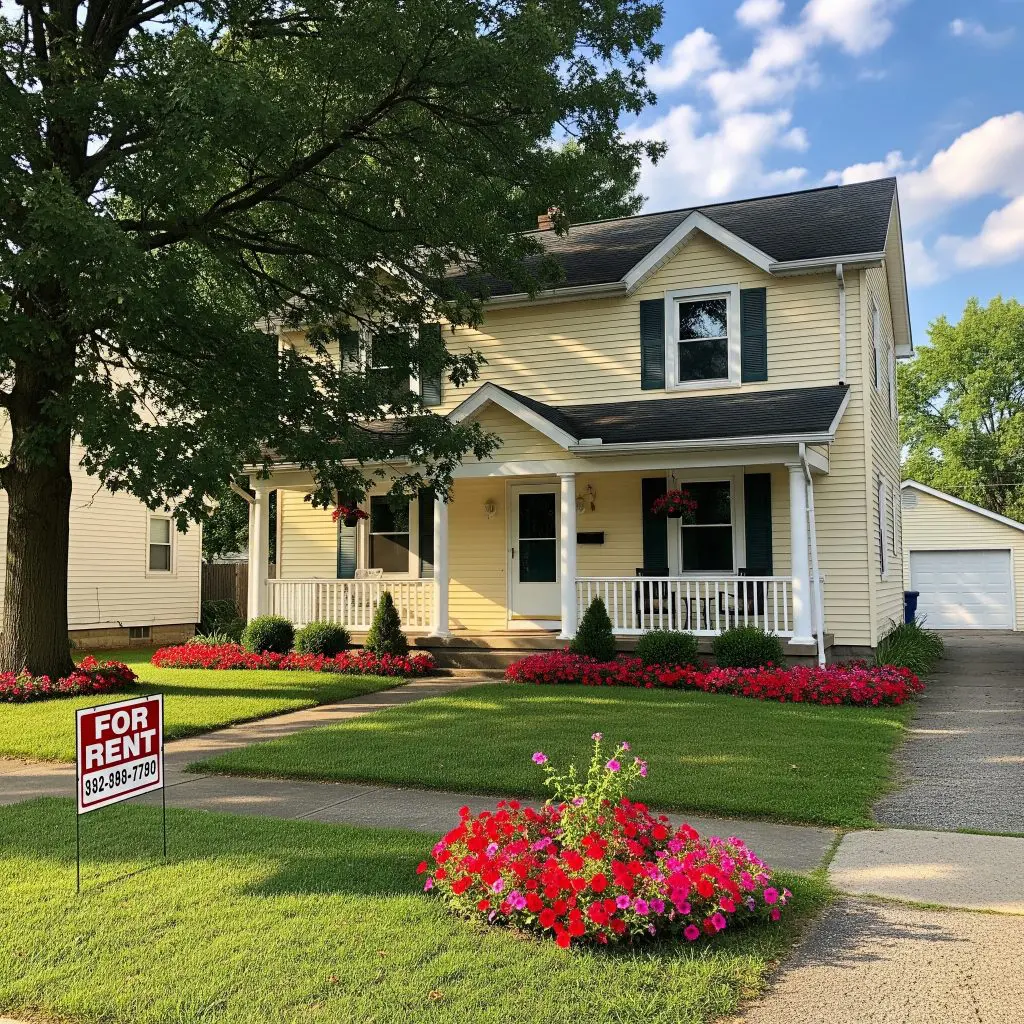Cleveland – September 23, 2025: Navigating the complex world of real estate investment requires a deep understanding of local market dynamics, financing strategies, and, crucially, tax implications. For investors targeting the Buckeye State, comprehending property tax implications for Ohio real estate investors isn’t just a recommendation—it’s a financial imperative. This comprehensive guide will equip you with the knowledge to optimize your investment portfolio, minimize tax burdens, and leverage the right financing to achieve your goals.
Tax Implications for Ohio Real Estate Investors:
The Ohio Property Tax Landscape: A Primer for Investors
In Ohio, property taxes are an ad valorem tax, meaning they are based on the value of the property. While the state sets the general rules, property valuation and tax collection are handled at the county level by the County Auditor’s office. This decentralized system means tax rates and assessment methods can vary significantly from one county to the next, making local knowledge a key competitive advantage.
- Valuation and Assessment: Ohio law mandates a full reappraisal of all real property every six years, with an update to values in the third year following the reappraisal. The Auditor determines the true market value, then assesses the property at 35% of its market value for tax purposes. For a rental property in a booming market like Columbus (zip code 43201) or a revitalized neighborhood in Cleveland (zip code 44109), this valuation can change dramatically, directly impacting your tax bill and, by extension, your cash flow.
- The Millage Rate: Property tax is calculated using a millage rate, where one mill equals one-tenth of a cent ($0.001) per dollar of assessed value. The total millage rate is a combination of levies from various taxing authorities, including the city, county, school district, and other local entities. For an investor, it is crucial to research these rates. A duplex in the University District of Columbus will have a very different tax profile than a single-family rental in the suburbs of Cincinnati (zip code 45208) or a commercial property in downtown Toledo (zip code 43604).
Understanding these fundamental components is the first step toward smart tax planning. However, for investors, the real opportunity lies in how you finance your acquisitions.

DSCR Loans: Your Strategic Advantage in Ohio Real Estate
Traditional financing often requires extensive personal income and debt-to-income (DTI) verification, which can be a major hurdle for seasoned investors or those with multiple properties. This is where DSCR Loans (Debt Service Coverage Ratio) from a specialized lender like GHC Funding become a game-changer. These loans are specifically designed for real estate investors and focus on the property’s ability to generate income, not your personal financial statements.
Key Features and Requirements of a DSCR Loan
DSCR Loans are underwritten based on a property’s cash flow. The DSCR is a simple but powerful metric: DSCR = Net Operating Income (NOI) / Total Debt Service (P&I). A DSCR of 1.25, for example, means the property’s NOI is 25% higher than its debt obligations, demonstrating a healthy cash-flowing asset.
- No Personal Income or DTI Checks: This is the primary benefit. DSCR loans are perfect for investors who may have high personal DTI but a strong portfolio of income-producing assets.
- Entity-Level Lending: These loans are typically made to a business entity, such as an LLC. This provides a layer of legal protection and simplifies accounting. GHC Funding has extensive experience working with LLCs and other business structures, making the process seamless.
- Flexible Property Types: While traditional lenders may be restrictive, DSCR loans are well-suited for a variety of investment properties, from single-family homes and duplexes to multi-family properties and even short-term rentals in high-demand areas like the Lake Erie islands or ski resort towns.
Current Market Insights and GHC Funding’s Edge
As of late 2025, DSCR loan interest rates for investment properties typically range from 7.00% to 9.50%. The specific rate you receive is influenced by several factors:
- Credit Score: A higher credit score (e.g., 700+) will generally secure a lower rate.
- DSCR: A higher DSCR (e.g., 1.50 vs. 1.20) indicates a more profitable property and can lead to more favorable terms.
- Loan-to-Value (LTV): A lower LTV, meaning a larger down payment, reduces lender risk and can result in a better rate.
- Property Type: Multi-family properties or short-term rentals in strong markets may be viewed more favorably.
This is where GHC Funding’s expertise shines. We offer flexible underwriting and a streamlined process that understands the nuances of the Ohio real estate market. Our team has a proven track record of helping investors secure the right financing, whether they are acquiring a single-family home in the historic German Village neighborhood of Columbus (43206) or a multi-family building in the revitalizing Tremont area of Cleveland (44113).
Beyond DSCR Loans, GHC Funding offers a full suite of financing options including DSCR Loans, SBA 7a loans, SBA 504 Loans, Bridge Loans, and Alternative Real Estate Financing. Our diverse portfolio ensures that you always have access to the capital you need, no matter the scale or complexity of your project.
DSCR Loan IQ Quiz!

Test your knowledge of Debt Service Coverage Ratio (DSCR) loans!
Advanced Ohio Geo-Targeting: Where to Invest
To truly optimize your portfolio, you must look beyond general market trends and focus on specific, high-potential areas.
- Columbus MSA: As Ohio’s capital and a hub for tech and education, Columbus is a prime target. Consider investment properties in the growing suburbs of Dublin or Powell, or focus on student housing near The Ohio State University (zip code 43210).
- Cincinnati & Dayton: The Cincinnati-Dayton corridor offers a wealth of opportunities. The revitalized Over-the-Rhine neighborhood in Cincinnati (zip code 45202) is popular for both residential and short-term rentals. In Dayton, investors can find affordable housing in areas like the historic South Park neighborhood (zip code 45409) with strong rental demand.
- Cleveland & Akron: The industrial powerhouse of Cleveland is experiencing a renaissance. Look for investment properties near the Cleveland Clinic (zip code 44195), catering to medical professionals, or in the student-heavy neighborhoods around Kent State University (Akron MSA, zip code 44240).
By strategically acquiring properties in these locations, you can optimize your rental income and, in turn, strengthen your DSCR, making future financing even more accessible.
Q&A Section: Your Top Questions Answered
Q1: How do property taxes affect my DSCR?
A: Property taxes are a significant operating expense and are subtracted from the gross income to calculate the Net Operating Income (NOI). A higher property tax bill lowers your NOI, which in turn reduces your DSCR. This is why it is crucial to factor in local tax rates when analyzing a potential investment property.
Q2: Can I appeal my property tax assessment in Ohio?
A: Yes. You can file a complaint with your County Board of Revision if you believe your property has been valued incorrectly. This can be a complex process and may require a professional appraisal to support your case.
Q3: Are there any tax deductions for real estate investors in Ohio?
A: Yes. Investors can deduct a wide range of expenses from their rental income, including mortgage interest, property taxes, insurance, repairs, and depreciation. This can significantly reduce your taxable income. Always consult with a qualified tax professional to ensure you’re maximizing your deductions.
Q4: Does owning a property through an LLC impact my property taxes?
A: For property tax purposes, the ownership structure generally doesn’t matter. Property taxes are based on the property itself, not the type of entity that owns it. However, owning property through an LLC offers liability protection, which is a key consideration for any investor.
Q5: What is the “House Bill 920” tax reduction and does it apply to investors?
A: House Bill 920 is a Ohio law that limits how much property taxes can increase on existing levies when a property’s value goes up. This reduction is applied to all parcels, regardless of whether they are owner-occupied or rental properties.
Quiz on Ohio Rental Property Laws

This quiz will test your knowledge of the essential laws and regulations for owning and managing an Ohio rental property. Understanding these rules is crucial for protecting your investment and ensuring a smooth tenancy.
Take the Next Step
Understanding property tax implications for Ohio real estate investors is just one piece of the puzzle. The real key to success is pairing this knowledge with a financing partner who truly understands your needs. At GHC Funding, we specialize in providing tailored financing solutions that empower investors to grow their portfolios without the limitations of traditional lending.
Ready to seize your next Ohio investment opportunity? Contact us today at 833-572-4327 or visit our website at www.ghcfunding.com to learn how our flexible loan programs can help you achieve your investment goals.
Useful Resources for Ohio Real Estate Investors
- Ohio Department of Commerce, Division of Real Estate & Professional Licensing: For state-level real estate laws and regulations. https://com.ohio.gov/divisions-and-programs/real-estate-and-professional-licensing
- Ohio Real Estate Investors Association (OREIA): A great resource for networking and local market insights. https://oreia.org/
- Ohio Housing Finance Agency (OHFA): Provides data and insights into Ohio’s housing market trends. https://ohiohome.org/
- The Ohio Department of Taxation: Official information on property tax laws and regulations. https://tax.ohio.gov/

